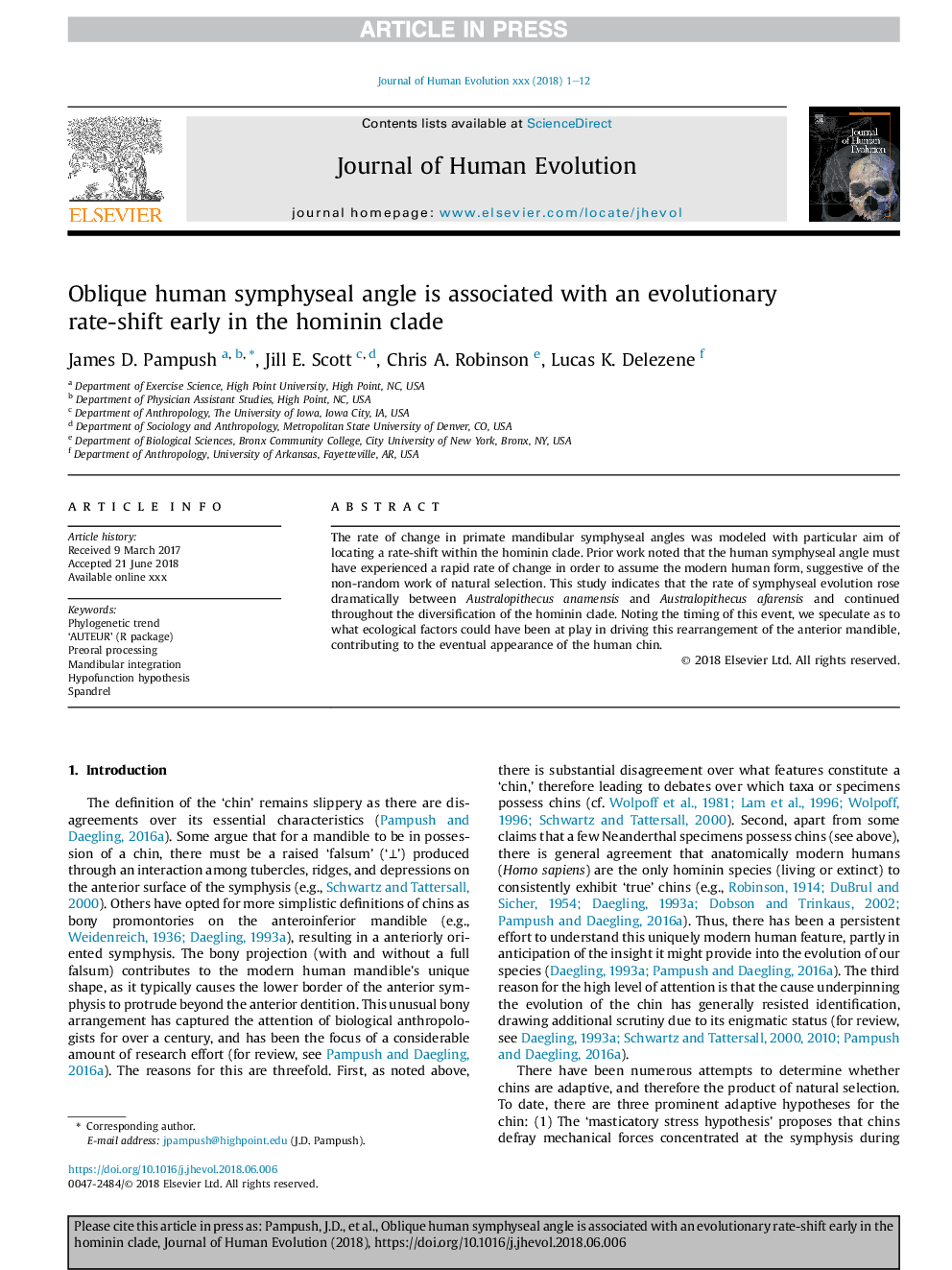| Article ID | Journal | Published Year | Pages | File Type |
|---|---|---|---|---|
| 8959446 | Journal of Human Evolution | 2018 | 12 Pages |
Abstract
The rate of change in primate mandibular symphyseal angles was modeled with particular aim of locating a rate-shift within the hominin clade. Prior work noted that the human symphyseal angle must have experienced a rapid rate of change in order to assume the modern human form, suggestive of the non-random work of natural selection. This study indicates that the rate of symphyseal evolution rose dramatically between Australopithecus anamensis and Australopithecus afarensis and continued throughout the diversification of the hominin clade. Noting the timing of this event, we speculate as to what ecological factors could have been at play in driving this rearrangement of the anterior mandible, contributing to the eventual appearance of the human chin.
Keywords
Related Topics
Life Sciences
Agricultural and Biological Sciences
Ecology, Evolution, Behavior and Systematics
Authors
James D. Pampush, Jill E. Scott, Chris A. Robinson, Lucas K. Delezene,
